Welcome! Our precious Iron member, enjoy 3% off on First Order.
Ring Size Chart
Please use the chart below for your reference. Viennois-online.com carries US ring sizes: 5, 6, 7, 8, 9, 10. We do not carry half sizes. See below for details:

Necklace Size Chart
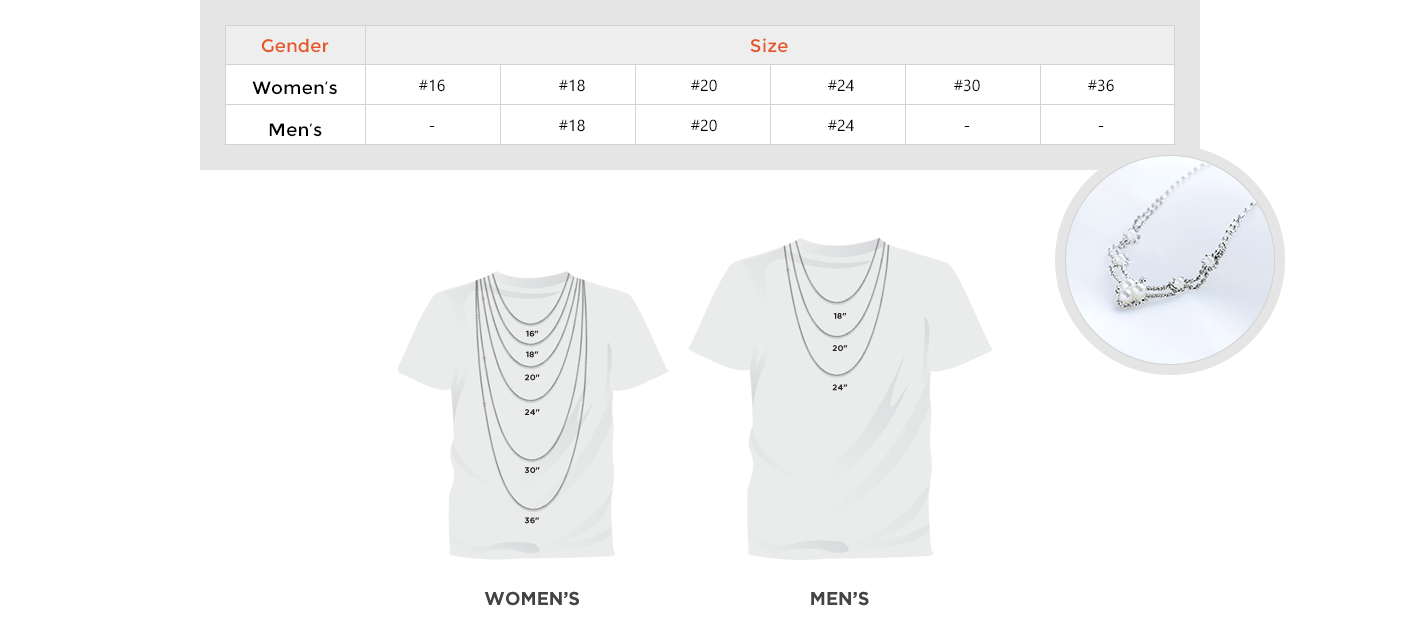
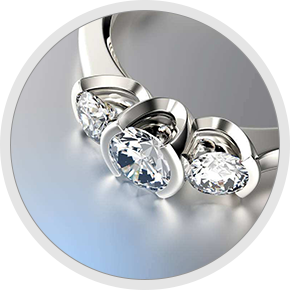
925 Sterling Silver
925 Sterling Silver is a combination of 92.5% pure silver and 7.5% of another metal, and it is the highest percentage of fine silver possible for jewelry subject to everyday wear. Fine silver (99.9% pure) is generally too soft and malleable for jewelry. Therefore, it is usually combined with copper to give it strength, while at the same time preserving both the ductility and beauty of its original form. How to care, click here
Find out more about 925 Sterling Silver !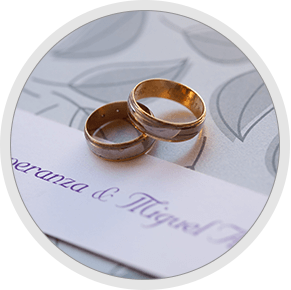
Brass
Brass is an alloy of copper and zinc. The proportions of zinc and copper can be varied to create a range of brasses with varying properties. For jewelry, the most commonly used percentages of copper and zinc is 67% and 33%. This mixture helps the brass become stronger and more durable than copper alone, which allows for superb electroplating quality, and thus, it is the perfect combination for fashion jewelry.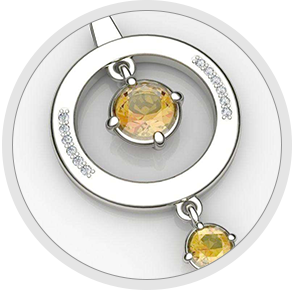
TK316 Stainless Steel
TK316 Stainless Steel used in fashion jewelry, is an alloy with a minimum of 10% chromium content by mass. It does not stain, corrode or rust as easily as ordinary steel, and it is also hypoallergenic. Thus, it is extensively used in heavy gauge-welded components, such as jewelry. Tusk 316 stainless steel is of the highest quality for jewelry products. How to care, click here
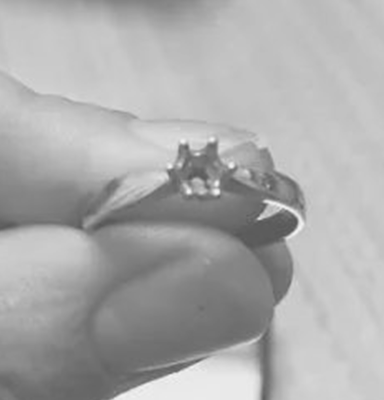 FOR STERLING SILVER
FOR STERLING SILVER
READ MORE
 FOR CUBIC ZIRCONIA
FOR CUBIC ZIRCONIA
READ MORE
 FOR RHODIUM PLATED SILVER
FOR RHODIUM PLATED SILVER
READ MORE
 FOR GOLD PLATING
FOR GOLD PLATING
READ MORE
 FOR STAINLESS STEEL
FOR STAINLESS STEEL
READ MORE
Clean your sterling silver jewelry with a soft 100% cotton (nub free) cloth or flannel cloth and gently rub off any excess makeup. Remember, silver is a very soft metal and you can scratch it if you aren't careful so don't rub it too briskly. Never use anything but a clean 100% cotton or a special sterling silver cleaning cloth (a popular choice is Sunshine Polishing Cloth) or very soft bristle brush, like a baby’s tooth brush or a horsehair silver brush. Paper, polyester, and coarse fabrics often contain wood fibers or synthetics that can cause tiny scratches in the surface of your fine sterling silver jewelry. Dirt left over from previous cleanings can scratch the surface as well.
Note: We recommend that you don’t use silver dips for removing oxidation from your silver jewelry as it will leave microscopic pits causing it to darken faster. Instead, focus on preventative care by storing your jewelry in a closed box or plastic baggy as silver will tarnish when exposed to air.
Note: We recommend that you don’t use silver dips for removing oxidation from your silver jewelry as it will leave microscopic pits causing it to darken faster. Instead, focus on preventative care by storing your jewelry in a closed box or plastic baggy as silver will tarnish when exposed to air.
FOR CUBIC ZIRCONIA
Just like a diamond, a cubic zirconia can be cleaned with warm water and mild soap. Use a soft, cosmetic applicator to reach crevices. However, if you wish, you can use a trusted jewelry cleaner to remove any dirt and dust from your zirconium.
Steam your CZ jewelry. Using a teakettle or any other method that produces steam, hold your jewelry directly over the steam stream to loosen dirt. You should wear gloves and use tongs or needle-nose pliers to avoid burns. Once steamed, use your polishing cloth to dry your jewelry.
Clean your jewelry with an ultrasonic cleaner. These units are inexpensive and nice to have if you own a lot of CZ jewelry. Store your jewelry in an airtight, sealable plastic bag. If this is not possible, store your jewelry in a lined jewelry box, away from the outside air.
FOR RHODIUM PLATED SILVER
Never use any chemicals on your rhodium items. Never use toothpaste and never brush with a toothbrush. Don't use polishing cloths that are intended for use on uncoated silver or for gold jewelry. Don't place in an ultrasonic cleaner. Never use abrasives of any kind. Never use silver dips. Never use ammonia-based products. If you have an antique or heirloom, don't clean it without consulting an expert on your item.
FOR GOLD PLATING
FOR STAINLESS STEEL


No-Plating
No-Plating is when the metal of the jewelry piece has no additional outer coating, and the metal is often polished to make it shiny and reflective.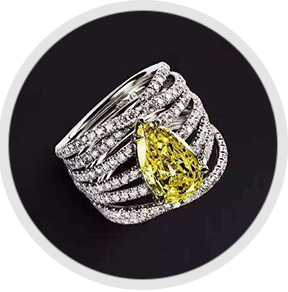
Vacuum/Ion Plating
Vacuum/Ion Plating the product is placed in a vacuum chamber, which is pumped down to the desired vacuum pressure. The chamber is then heated to the target temperature to evaporate the material, which is sprayed onto the product, producing a thin layer of coating. It is more durable and wear-resistant than traditional plating methods.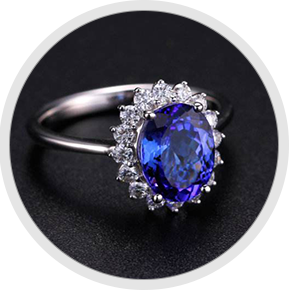
Galvanic Plating
Galvanic Plating is a process that uses electric currents applied to two opposite poles (negative & positive) in a tank of solution which contains the dissolved material of the coating. The product is attached to the negative pole and powered with a negative charge, while the metal dissolved in the solution is powered with a positive charge. The product then attracts the positive-charged metal in the solution, and thus, creating a thin coating of the desired material.
 Gold Plated
Gold Plated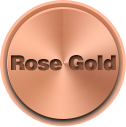 Rose Gold Plated
Rose Gold Plated Platinum Plated
Platinum Plated Silver Plated
Silver Plated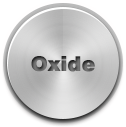 Oxide
Oxide

Single-Tone
Single Tone is when a piece of jewelry has only one type/color of plating.
Two-Tone
Two-Tone is when a piece of jewelry has two types/colors of plating.
Three-Tone
Three-Tone is when a piece of jewelry has three types/colors of plating.

